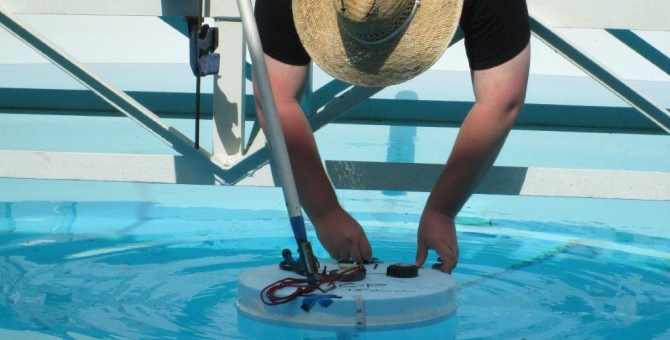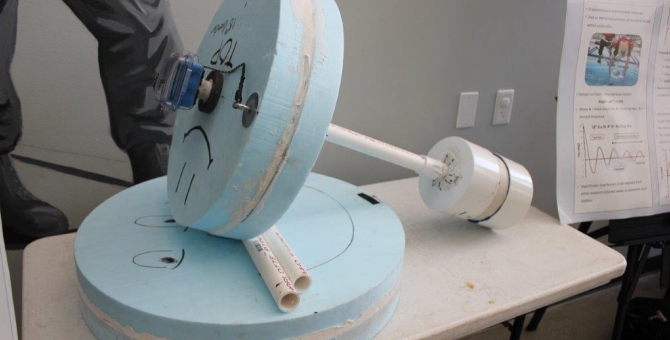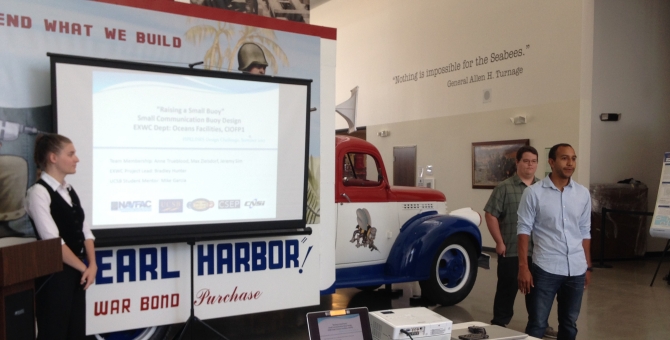Examining the Radio Connectivity of Small Barbell Communication Buoys
Project Description
The networking of systems for data transfer is difficult when the data must cross the ocean to atmosphere interface. To meet the requirement for connectivity in future systems, the US Navy is investigating the use of small buoys as a platform for radio antennas. However, the cyclical motion of the sea causes the buoy to rock. This motion can interrupt the connection to a receiver, leading to less data throughput or more downtime. Our team was tasked to design a compact buoy with features that promote connectivity. To do so we researched existing buoys, before formulating our barbell design. We then fabricated modular prototypes using foam disks and PVC pipe. We tested the prototypes in a dive tank to measure the vertical and angular response. The experimental data was then used to tune parameters for simulation software. The simulation software modeled the motions of the buoy within different operational sea states. We found that in the roughest sea state tested, the pitch of the buoy ranged within 20 degrees for 99.9% of the time. These results show promising directions for further optimization of the platform features. The platform is also compatible with a variety of antenna types. Through this development we demonstrated that the buoy design can provide the capability that the US Navy requires.





















